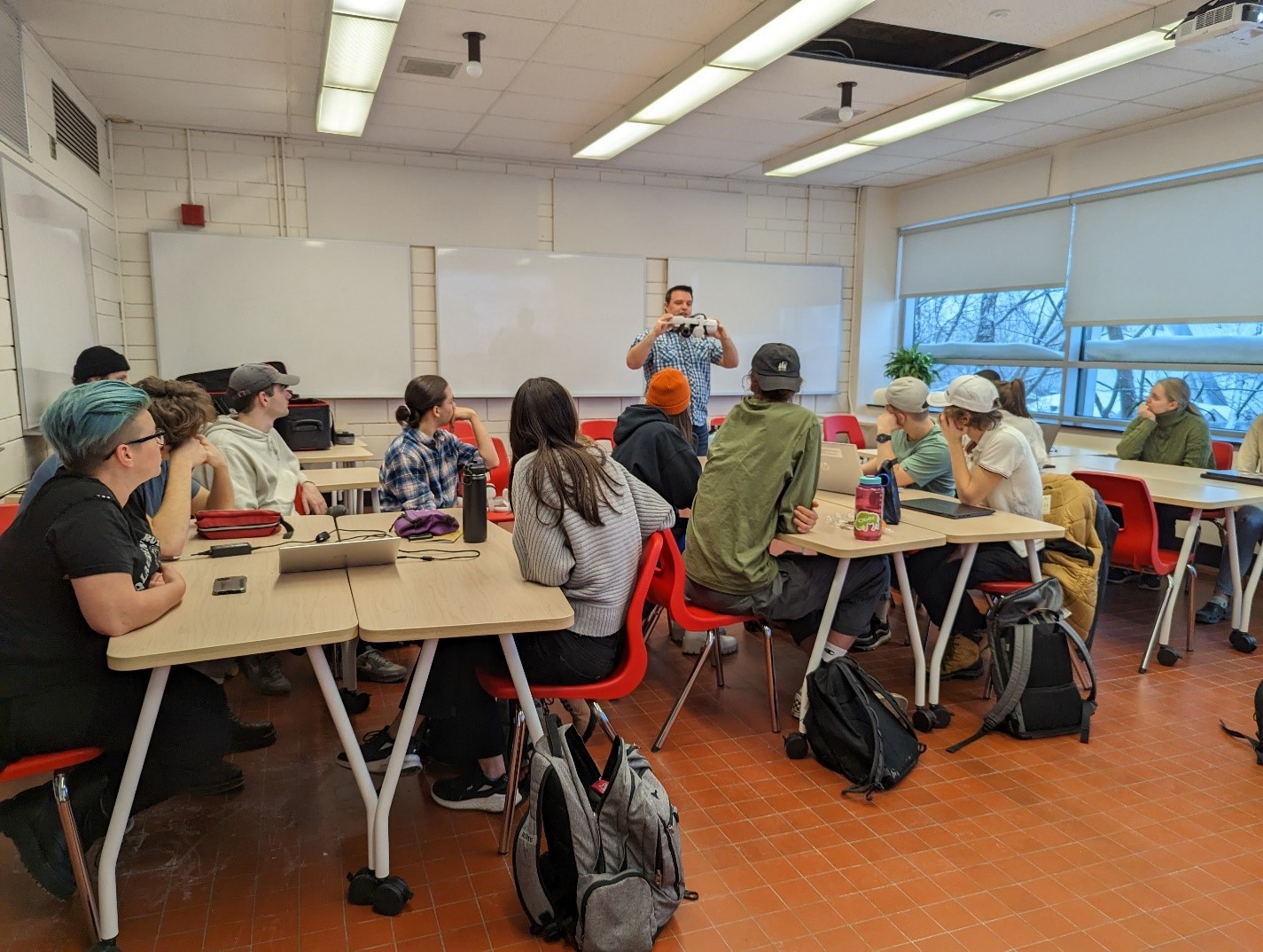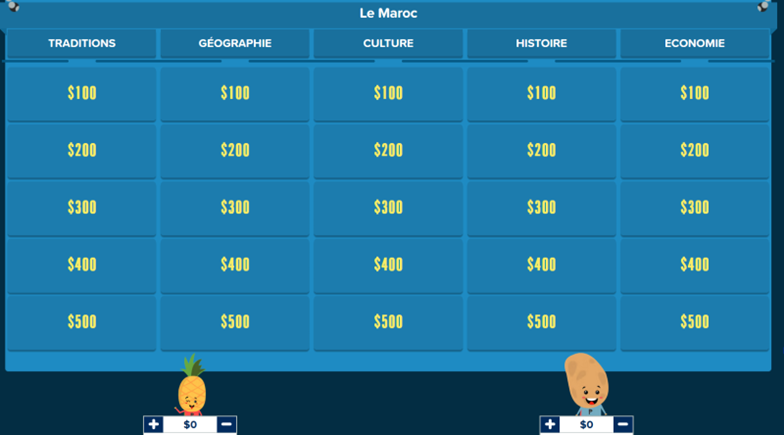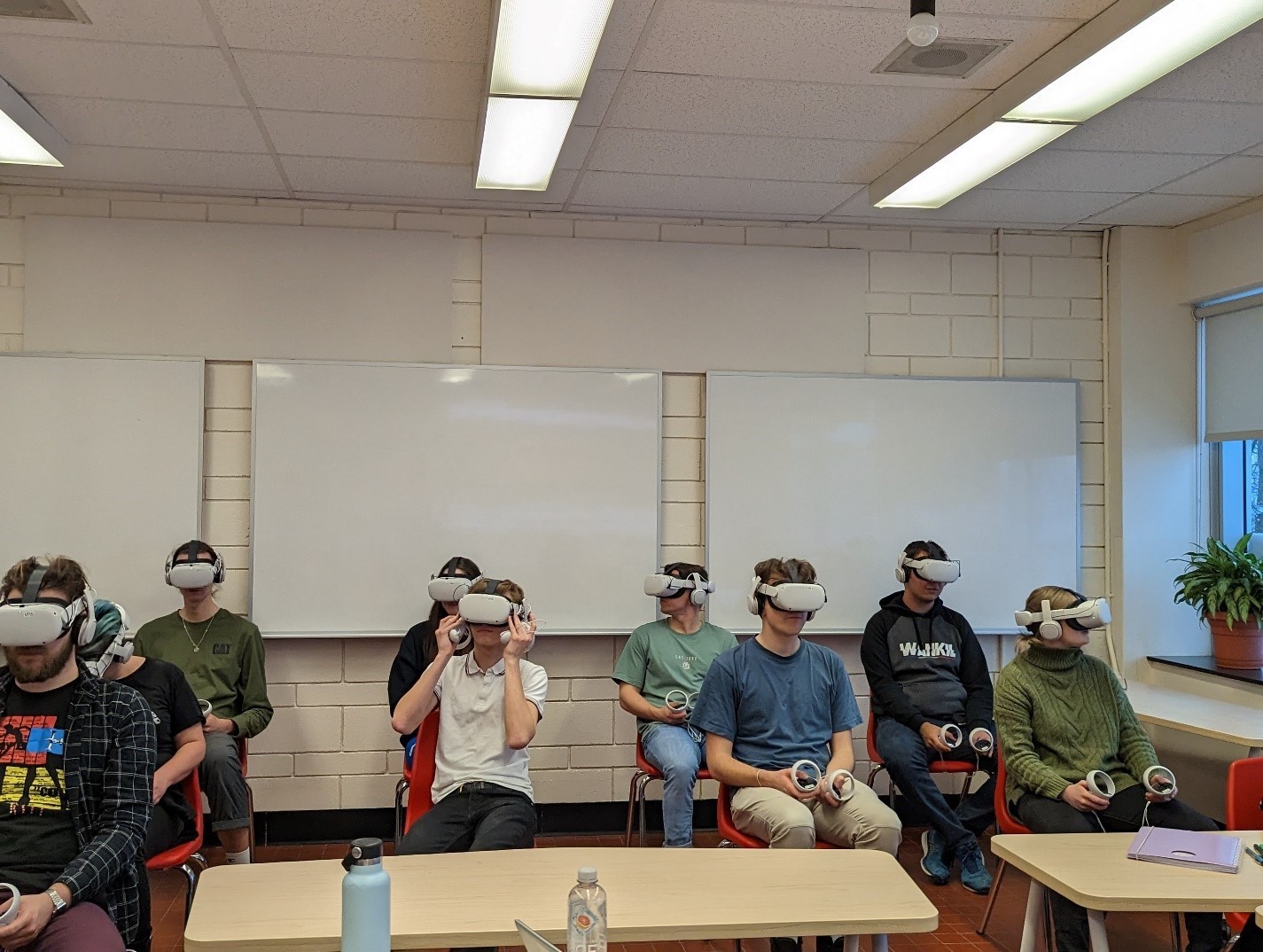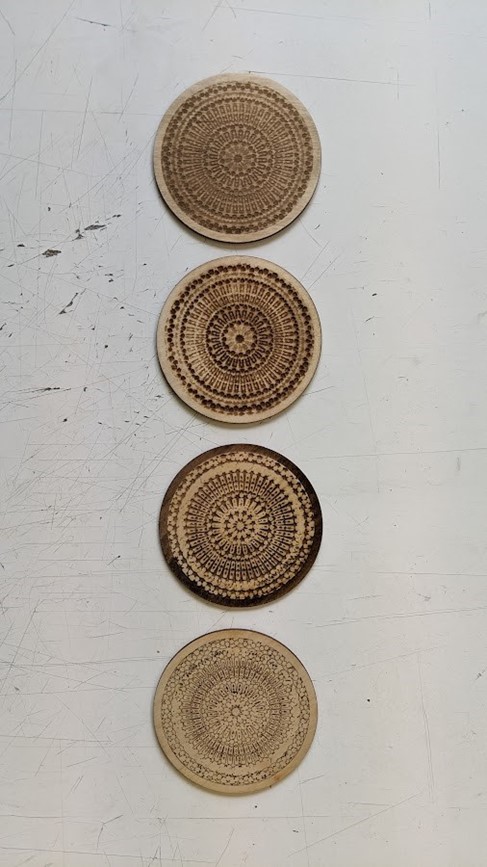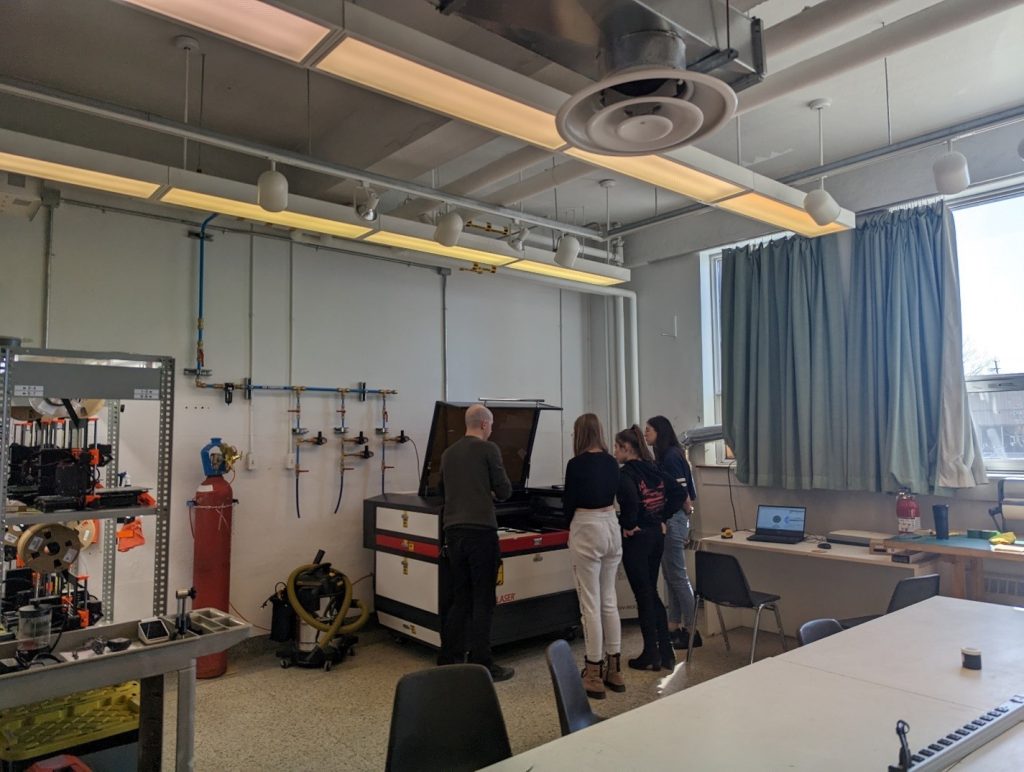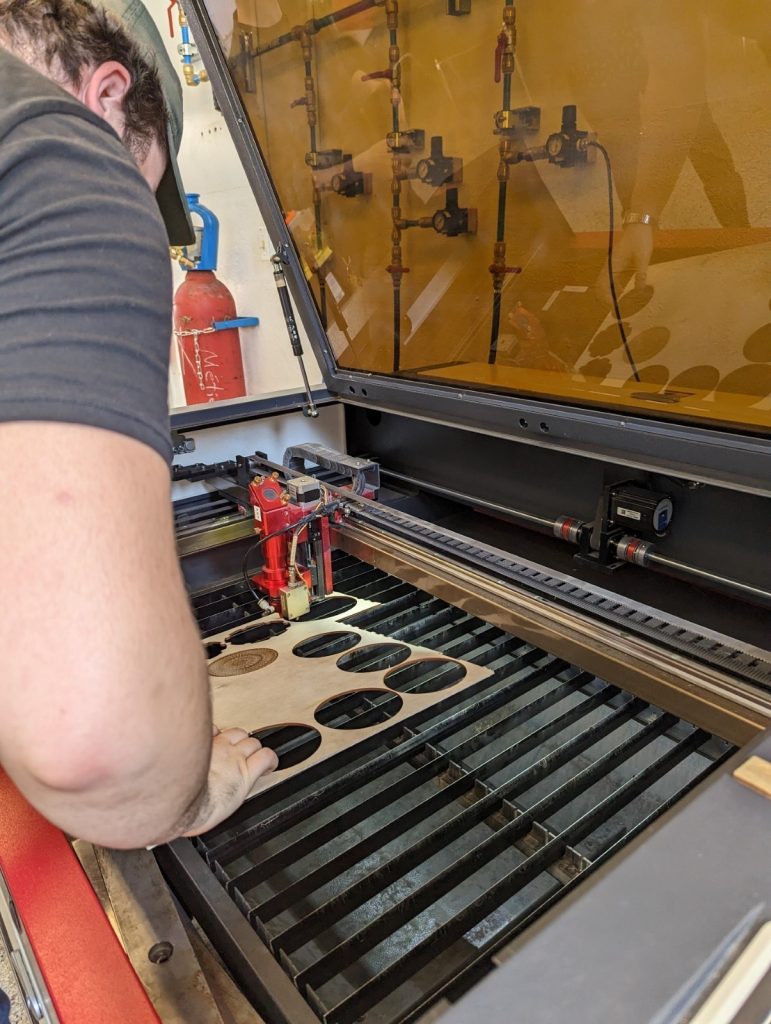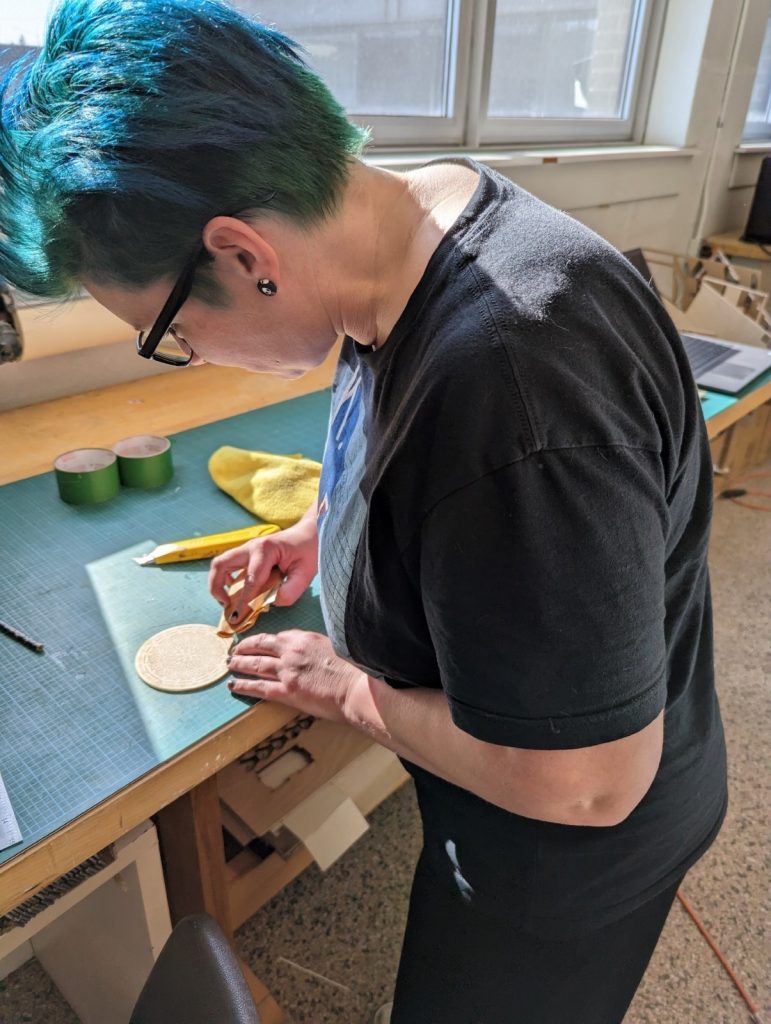In the Winter 2023 session, I taught the complementary course Séjour international [International Stay] at Cégep Limoilou. To prepare my students for a 3-week trip to Morocco at the end of the session, I set up 2 activities involving technological tools to develop attitudes, rather than technical or technological skills. Here I present these activities—one involving virtual reality (VR) headsets and the other a laser engraver cutting machine—and describe how technical barriers were lowered to allow for a focus on the development of wonder as a learning attitude.
The aims of complementary general education
In the Quebec college system, all students enrolled in programs that lead to a Diploma of College Studies (DCS) are required to take 2 complementary courses. Complementary general education is 1 of the 3 components of general education and pursues a threefold goal:
- the acquisition of a common cultural background
- the development of transferable skills
- the adoption of desirable attitudes
Complementary courses are designed to bring students into contact with fields of knowledge other than those that characterize their pre-university or technical program of study. The objectives and standards proposed by the ministère de l’Enseignement supérieur give rise to transferable skills that are more cultural than vocational in nature.
As a result, learning activities in these courses should be designed to help students discover new horizons and broaden their field of knowledge. More specifically, the Séjour international course targets the ministerial competency 021M (Explore a contemporary issue from a transdisciplinary perspective).
To complement and successfully support the development of the research skills taught in this course, I also wished to focus on what I consider an essential attitude related to these skills and with the encompassing competency in a broader sense: wonder. In the field of education, wonder is associated with intellectual curiosity, openness to the world, creativity, and self-reflection.
All of these attitudes are listed in the generic course plan for Séjour international, as they are in many other course plans. Therefore, planning the use of technological tools to develop not only specific skills, but also broader attitudes, is relevant in the context of most, if not all college courses.
What is wonder?
The capacity for wonder is an attitude often likened to looking at the world like a child. This is due to the fact that for young children, many things are new and unfamiliar. However, researchers in educational psychology argue that experiencing wonder is not limited to the new, and suggest that the development of a mature or adult form of wonder is rather determined by the presence of a reflexive element (Wolbert & Schinkel, 2021).
Wonder encompasses contemplative wonder (“wonder at”) and inquisitive wonder (“wonder about”). In this sense, wonder is not just educationally important as a motivation to learn, but also because:
- it is central to a learner’s understanding of what they don’t know, what they think they know, and what they recognize they cannot know
- it revives or keeps alive the learner’s interest in the subject matter
- it increases awareness of the existing ways to understand things, and helps learners to see alternative possibilities
Based on these observations, we can distinguish 3 dimensions of wonder in education:
- a cognitive dimension (a state of “not-(yet)-knowing” that inspires curiosity)
- a sensory dimension (considering the object of study from different angles or with different senses)
- an emotional dimension (e.g., awe and amazement)
Based on these observations, education researchers working on wonder-full pedagogy have identified 4 characteristics of pedagogical tools that encourage wonder:
- Exploration. Activities and examples must offer something more than the effect of novelty. The teacher should be sensitive to the students’ experience and guide them from mere surprise to a deeper experience of wonder (awe and curiosity).
- Improvisation. The teacher must have room for improvisation, i.e., have the time and flexibility to go along with students’ reflective thinking process and explore their questions and comments.
- Imagination. Imagining what someone else experiences stimulates emotional connections to the subject matter and sparks creativity, both of which play a role in keeping students motivated and engaged.
- Personal interest. Within wonder-full pedagogical activities, students should have opportunities to pursue angles or aspects that interest them personally.
I kept in mind these 3 dimensions and 4 characteristics as I designed the 2 learning activities described in the following sections.

